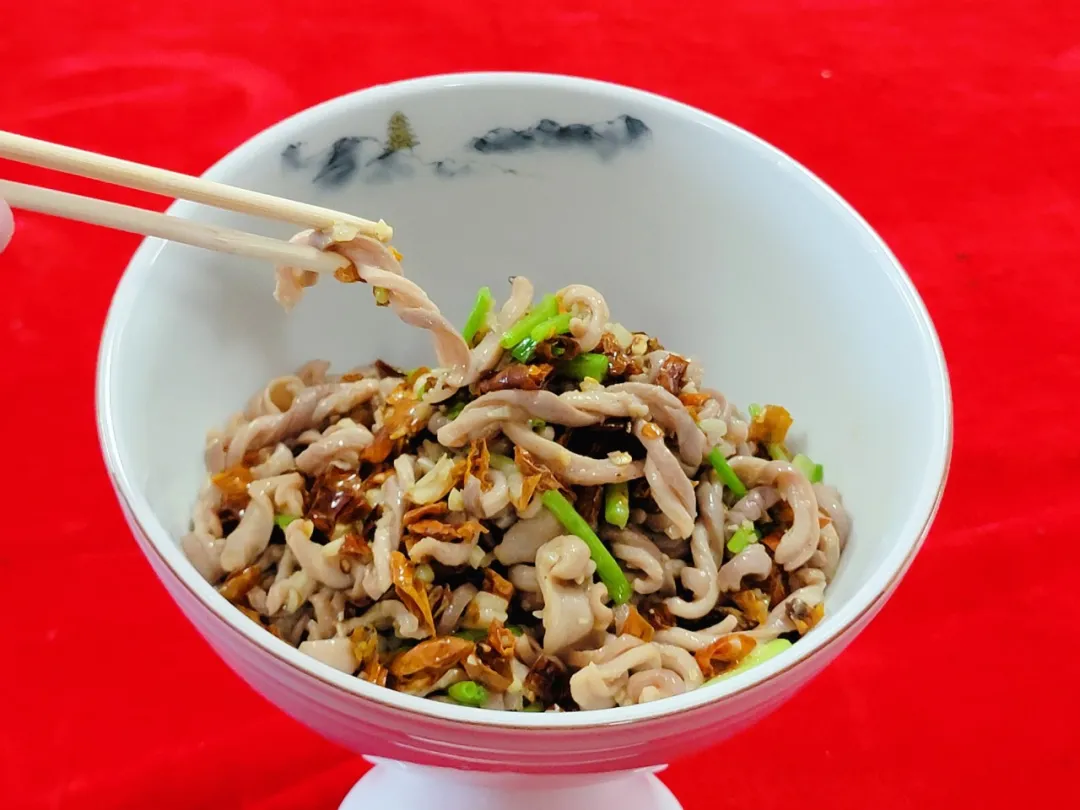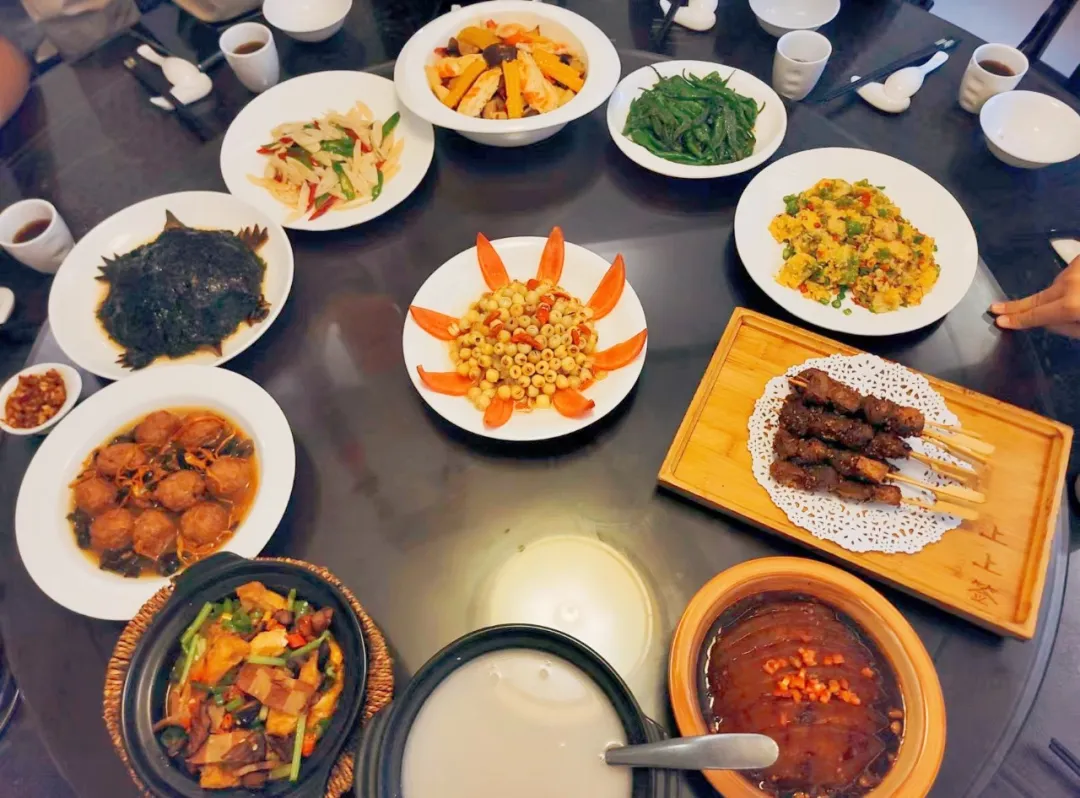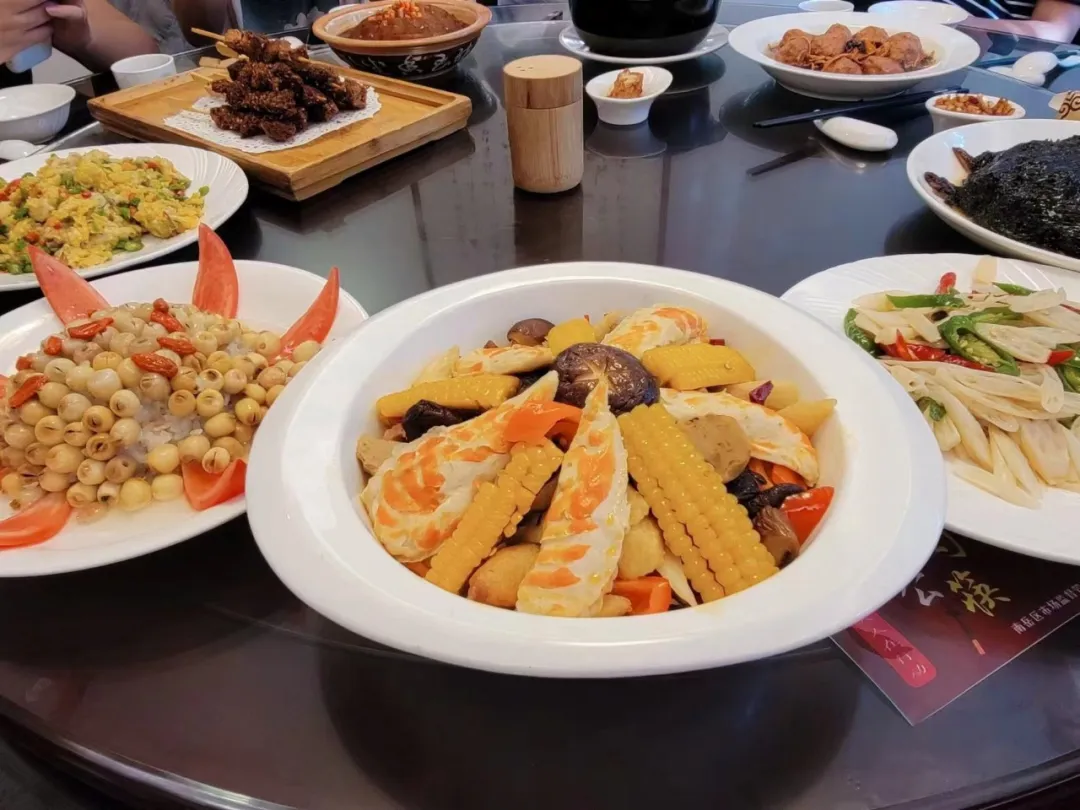文旅湖南 2024-07-23 09:35:48
As a representative of Hunan cuisine, Hengyang cuisine is famous for its stir-fried dishes, which are a continuation of the millennium history and culture in Hengyang City.

This year, as the third Hunan Tourism Development Conference is to be held in Hengyang, many tourists from other places visit Hengyang City for its specialty cuisine.
The Siyuetian Private Kitchen near Hengyang Yintai City was packed on the noon of July 4.
“Stir-fried pork tripe is a must try. It’s the most representative dish of Hengyang cuisine and can be seen on every dining table,” said Quan Fangfang, a native of Hengyang. After getting off the high-speed train, she took her friend from Guangdong Province straight to the restaurant and recommended Hengyang cuisine.
“With crispy shredded pork tripe and a spicy taste, this dish is different from Guangdong cuisine, but it’s very tasty,” said her friend.

“Hengyang cuisine is famous for its freshness, fragrance, and spiciness. There are three necessary ingredients, namely tea oil, yellow peppers, and rice wine. Tea oil has a bright color and a fragrant aroma. When used for stir frying, it adds a hint of plant fragrance to the food. Rice wine is used to remove fishy odors and further enhance its flavor. Yellow peppers, with golden color, thin skin, and thick flesh, bring diners a visual and gustatory stimulation,” said Wang Yi, founder of the Siyuetian Private Kitchen.
Stir-fried pork tripe not only requires exquisite ingredients, but also has high demands on chefs’ knife skills and mastery of heat.
“At first, the tip of the pork tripe should be selected. The tripe tip is cut into shreds with a length of 3 centimeters and a width of 2 to 3 millimeters. After stir-fried on high heat for 6 to 8 seconds, it will be crispy and easy to chew,” said Wang Yi. It only takes over 1 minute to cook the dish, but it needs chefs’ years of practice and experience.
In addition, there are also other tasty dishes in Hengyang that can satiate tourists’ appetite such as stir-fried native chicken with tea oil, stir-fried eggs with eel, stir-fried pork with chili peppers, stir-fried mutton, and stir-fried pork kidney.
Nanyue vegetarian dishes are also well-known.

Mount Heng has been a holy place for praying for blessings since ancient times. Many royals and nobles came here to pray for longevity.
“Ancient people would take a bath, and keep a vegetarian diet in at least three days before going to Mount Heng to pray for blessings to show respect and piety,” said Tan Changjiang, head of Nanyue Fuyuan Vegetable Restaurant.
But it’s too bland and tasteless for the royals and nobles to eat boiled radish and cabbage for several days in a row. The imperial chefs made various vegetarian dishes imitating chicken, fish, meat, and eggs in shapes and tastes with eggplant, tofu, lotus roots, and winter melons as raw materials.
“Some cooking skills have been lost, and it is said that the imitation meat food made by the imperial chefs could be mistaken for real ones,” said Tan Changjiang.
Tan Changjiang introduced that Nanyue vegetarian dishes originated in ancient palaces, were widely spread in temples, and passed down and carried forward among the ordinary people. Now, the Zhurong culture, Longevity culture, and Buddhist and Taoist culture of Nanyue have been integrated into the names and arrangements of Nanyue vegetarian dishes, symbolizing good luck and peace.

There are many imitation meats in the kitchen of Fuyuan Vegetable Restaurant, such as “mutton shashlik” baked with monkey head mushrooms, “steamed pork” made with white gourds, “braised pork” cooked with soybeans and konjac products.
Among them, a dish resembling a turtle indicating a long life is the most exquisite. “With the head made with eggplant, the limbs and tail with shiitake mushrooms, and the turtle shell with seaweed, there are 5 seasonal vegetables under the turtle shell, symbolizing the five blessings descending upon the house,” said Tan Changjiang. This dish shares the same theme as that of the third tourism development conference to be held in Hengyang and has won honors such as a signature dish in “the Taste of Hunan” Delicacy Season and a Hengyang’s famous authentic dish.
Hengyang is an important birthplace of Hunan culture. Hunan culture is integrated into Hengyang cuisine, making cultural flavor a major feature of Hengyang cuisine.
Wang Chuanshan is a key figure in the inheritance and development of Hunan culture. Fuzi Meat, with its origination related to Wang Chuanshan is made with the best streaky pork slices. After wrapped with glutinous rice flour, they are fried to golden yellow, with a crispy and tender taste, shaped like an opening scroll of a book.
The Hengyang Seven-level Tower is created by Peng Yulin, an important inheritor of Hunan culture. This dish is made with grass carp balls, sweet potato balls, yellow sparrow meat, pork kidney, egg slices, and other ingredients, which are stacked into 7 to 9 levels in an exquisite pagoda shape, meaning ascending step by step to top ranks, wealth, and auspiciousness. It has a beautiful appearance and diverse tastes. It is an essential delicacy for Hengyang people to have a reunion dinner with families and friends.

Inclusiveness is the essence of Hunan culture and also the connotation of Hengyang cuisine. There are endless touching stories and rich cultural heritage behind every Hengyang dish.
责编:王柯沣
一审:王柯沣
二审:唐煜斯
三审:秦慧英
来源:文旅湖南
我要问



 下载APP
下载APP 报料
报料 关于
关于
 湘公网安备 43010502000374号
湘公网安备 43010502000374号